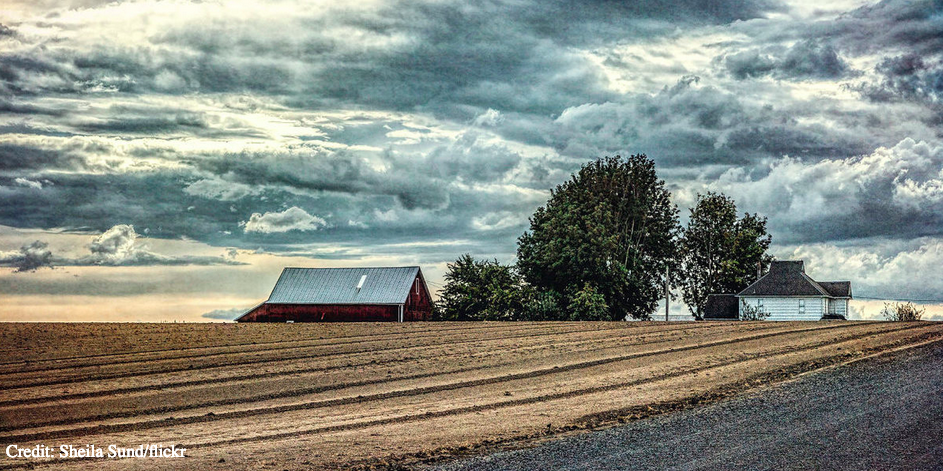Environmental Health News: Opinion: Right-to-Farm laws run counter to rural culture and property rights
by Loka Ashwood and Danielle Diamond | April 11, 2019
Our recent analysis of all 50 states found right-to-farm laws increasingly constrain crucial dimensions of property rights, favoring large-scale, industrial operations
American’s love their land, especially rural Americans. Access to land and property ownership shapes people’s identity, economic security, and social mobility, things commonly talked about in discussions of property rights.
We often talk less about the way property rights protect people’s health and their environment. Especially in rural places, laws safeguarding water and land from industrial pollution and other types of contamination are often weak to nonexistent.
Exerting property rights over the use and enjoyment of land offers one of the few tools rural people have to protect themselves.
In the event the water they drink, air they breathe, or soil they grow food on is harmed or contaminated, they can potentially sue for nuisance.
Innocuous sounding laws, broadly known as right-to-farm laws, though, increasingly constrain this crucial dimension of property rights. Every state in the nation has some version of these laws, most of them more than three decades old, with the original promise of curtailing urban sprawl and protecting family farms.
We recently analyzed these laws dated from 2015 in all 50 states and found that only four state statutes actually provided a legal basis to protect farmland from urban encroachment.
Instead, these laws mostly protect large-scale industrial farming operations by reducing rural people’s capacity to sue them for nuisance when they pollute.
Rather than protecting multi-generational farmers with deep attachments to the land and their communities, 46 percent of right-to-farm laws offer immunity from nuisance suits for agricultural enterprises that have been in operation for one year. Another 12 percent give other time-specific protections once an enterprise begins operations.
Yet only 16 percent of right-to-farm laws provide immunity for property owners that were there first, like farmers who live on their land and near their farms. For example, farmers in York County, Pennsylvania, sued a newly constructed industrial poultry confinement for nuisance within a year of its construction. The trial court barred the suit, ruling that, among other things, the operation obtained approval for its waste management plan more than a year prior.
Right-to-farm laws also tend to collapse collective rights of governance. Sixty percent of right-to-farm laws limit the authority of local governments to regulate agricultural land uses.
Most counties and municipalities can protect public health, safety and welfare within their jurisdictions through ordinances and zoning. But with agriculture, 32 states restrict local governmental capacity to protect the people. As we write, a bill proposed in North Dakota seeks to significantly reduce the ability of local governments to impose zoning restrictions and control the siting of industrial livestock operations within their jurisdictions.
All, though, is not lost. The capacity of rural people to bind together to affront these laws and protect their communities remains remarkable, even in the face of what can seem to be insurmountable odds.
Take, for example, the recent multi-million dollar verdicts against the Chinese-owned Smithfield’s industrial hog production facilities in North Carolina. Or the farmers and rural residents in Illinois who came together to stop the construction of a 20,000 head hog facility, despite the limited rights afforded to them under current Illinois law.
More can and should be done. Right-to-farm laws act similarly to eminent domain, taking away rural people’s rights to use and enjoy their property with little recourse.
The constitution, though, doesn’t allow that. The Bill of Rights limits such takings and ensures due process of law before depriving people of their rights.
Right-to-farm laws stand on shaky constitutional grounds and contradict American values of democratic self-governance and determination.
